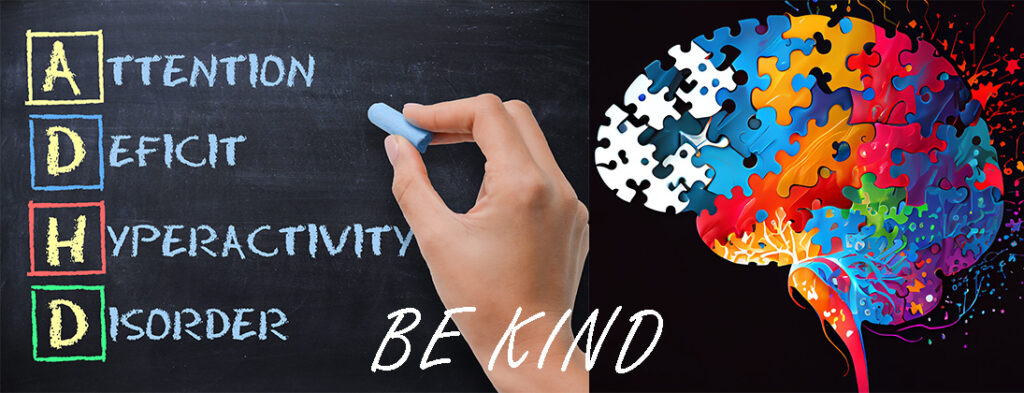Attention Deficit Hyperactivity Disorder (ADHD)
According to a 2016 article, there are 5.4 million children with ADHD in the United States. Despite this large number, there still seem to be unknowns and mistruths about the disorder. Those diagnosed, as well as parents and guardians, can feel lost, confused, and alone. And research can feel overwhelming.
Here are four common questions to get you started on the ADHD journey.
What Is ADHD?
Attention Deficit and Hyperactivity Disorder (ADHD) is a neurodevelopmental disorder typically, but not always, diagnosed during childhood. Early signs can include excessive daydreaming, forgetfulness, fidgeting, talking too much, and difficulty taking turns. Although it is typical for children to have trouble with these things sometimes, a child with ADHD exhibits these symptoms more frequently than their peers. These symptoms can create difficulties at home, in school, and in their personal lives.
There are three different types of ADHD.
- Hyperactive/Impulsive
Often, children with hyperactive/impulsive ADHD are described as “driven by a motor.” Being seen as “on the go,” they struggle to stay seated. Individuals with hyperactive/impulsive ADHD may talk excessively, interrupt others, and struggle with impulsivity.
- Inattentive
Individuals with inattentive ADHD have a hard time maintaining attention. Activities like following complex instructions and organizing tasks can be challenging. External stimuli can distract the person, and they tend to misplace things.
- Combined
Individuals with combined ADHD have symptoms of both hyperactive/impulsive and inattentive ADHD.
How is ADHD Diagnosed?
There is no simple or one test that can diagnose ADHD. Doctors typically do an assessment, which includes a medical examination that can help rule out other causes that may present themselves as ADHD. In addition, a physician will typically review family history, evaluate a checklist for rating ADHD symptoms, and gather input from others (i.e., parents and teachers).
What is the Treatment for ADHD?
ADHD is not curable; however, individuals can manage their symptoms successfully. Treatment options include medication and behavior therapy. Most people recommend a combination of both for best results; however, what works well varies by person. Any treatment plan requires monitoring, follow-up, and making necessary changes as needed.
Is ADHD Considered a Disability?
- School
Although not considered a learning disability, ADHD may be labeled a disability under the Individuals with Disabilities Education Act (IDEA). If qualified, the child can receive services and accommodations as identified through their Individualized Education Plan (IEP). Scheduled breaks, longer time to finish assignments, and the ability to use tools such as calculators are examples of accommodations in the classroom.
- Work
The Americans with Disabilities Act (ADA) protects individuals with disabilities. The civil rights law defines a disability as “a physical or mental impairment that substantially limits one or more of the major life activities of such individual.” Specified as a physical or mental impairment, ADHD has protection under the act. Companies with 15 employees or more must make reasonable accommodations for those qualifying under the act. These accommodations may include providing a quiet workspace, allowing noise-canceling headphones, and allowing assistive technology.
References:
https://pubmed.ncbi.nlm.nih.gov/29363986/
https://www.cdc.gov/ncbddd/adhd/facts.html
https://www.additudemag.com/3-types-of-adhd/
https://chadd.org/for-parents/individuals-with-disabilities-education-act/
https://www.additudemag.com/workplace-legal-protection/
https://www.law.cornell.edu/cfr/text/28/35.108


